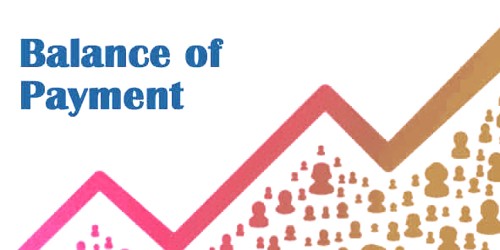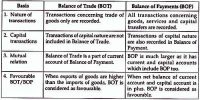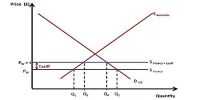A statement that summarizes an economy’s transactions with the rest of the world for a specified time period is called balance of payment. The balance of payments, also known as balance of international payments, encompasses all transactions between a country’s residents and its nonresidents involving goods, services, and income; financial claims on and liabilities to the rest of the world; and transfers such as gifts. It is a statement of all transactions made between entities in one country and the rest of the world over a defined period of time, such as a quarter or a year.
The balance of payments classifies these transactions in two accounts – the current account and the capital account. The current account includes transactions in goods, services, investment income, and current transfers, while the capital account mainly includes transactions in financial instruments. An economy’s balance of payments transactions and international investment position (IIP) together constitute its set of international accounts. Balance of Payments includes the following items. A country has a balance of payments problem when a section of its accounts are in regular deficit or surplus.
- Export and Import of Commodities
Every country exports some goods and imports some goods. By exporting goods it becomes a creditor country on the other hand by importing goods it becomes a debtor country. Balance of these visible exports and imports is known as balance of trade (or trade balance).
- Cost of Transportation
Cost of transportation has to pay for export and import of goods. If export and import trade is carried in foreign shipping then the country is a debtor country in respect of this item. Most industrialized nations contain migrants who remit fluids to relatives in their family of origin.
- Interest on Capital lent Abroad
Rich and wealthy countries lend their capital to needy countries. The debtor countries have to pay interest on borrowed capital. It includes investment income in the form of interest, rent, and profits.
- Banker’s Commission
Banks working in foreign countries earn commission and foreign counties stand as debtors to the countries to which the banks belong.
- Expenses of Tourists
Foreigners may visit a country for tourism. They spent money in that country where they go for tourism. Such expenses may increase the value of import or export.
- Foreign Education
When a student goes abroad for higher studies then he spent a lot of money in that country which increases the value of import or export. This covers the expenditure of travelers abroad.
- Political Expenses
For payment of diplomatic services, a country spends money in a foreign country. Such expenses must be included in the calculating indebtedness. In view of Meade visible and invisible exports and imports are regarded as trade items, on the other hand, the loans and grants which are taken or given to different countries are regarded as transfer item. The difference between trade items is called a balance of trade. But when transfer items are included in trade item, it is called balance of payment.
A country’s BOP is vital for the following reasons:
- BOP of a country discloses its economic and financially viable status.
- BOP statement can be used as a sign to find out whether the country’s exchange value is appreciating or depreciating.
- It helps the Government to settle on economic and business policies.
- By this statement, the government and business person can understand the financial dealings of a country with other countries.















